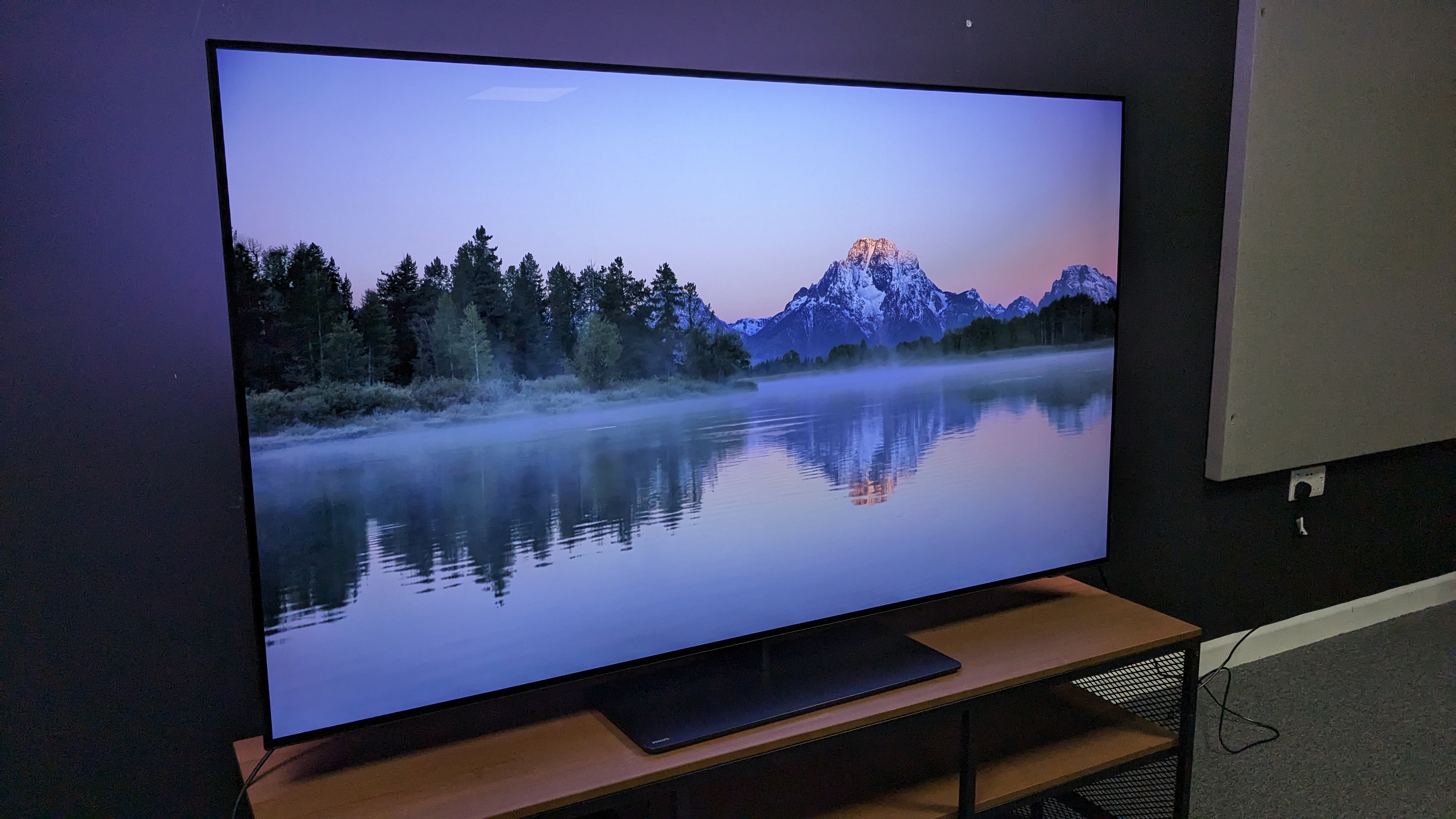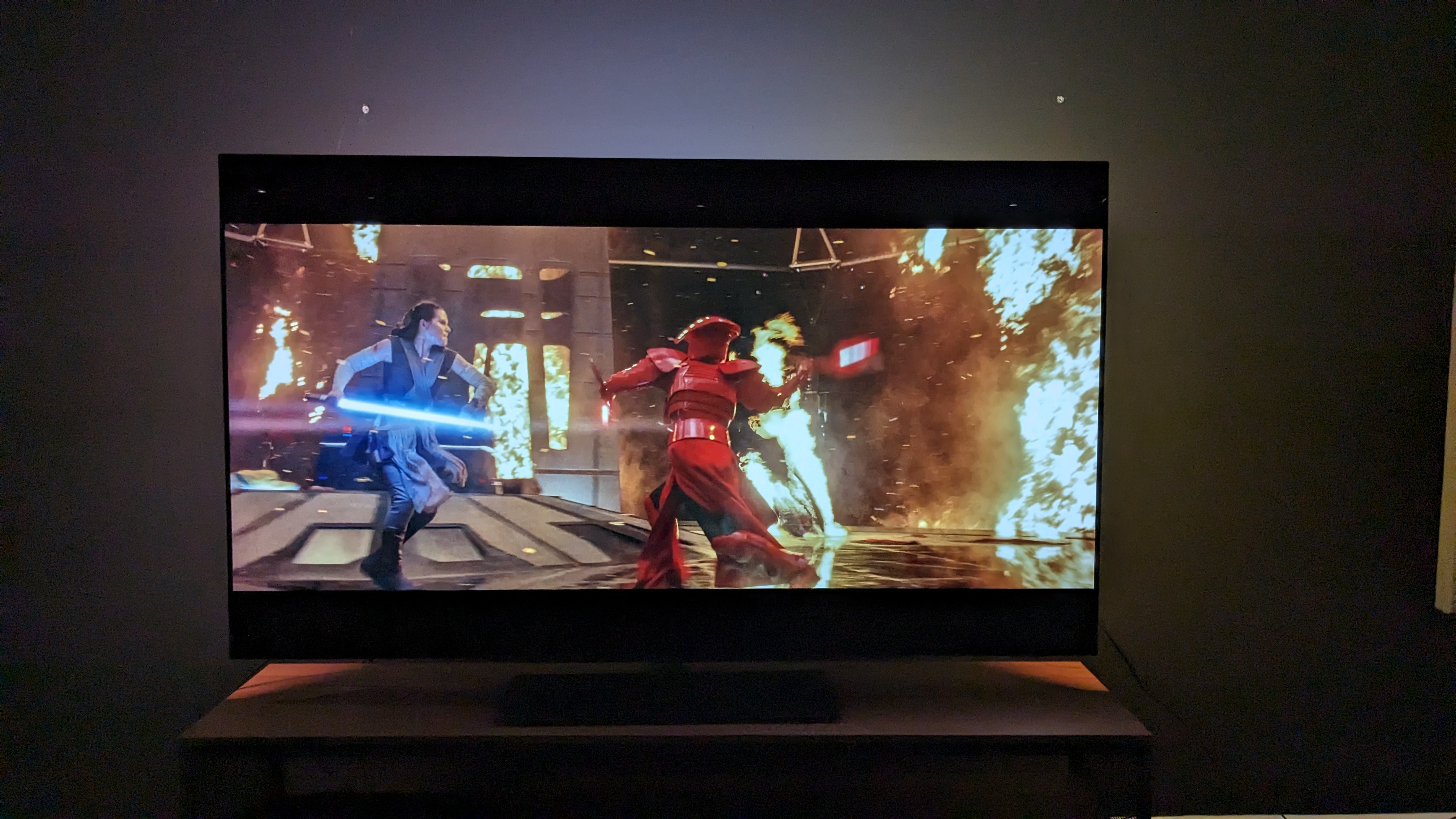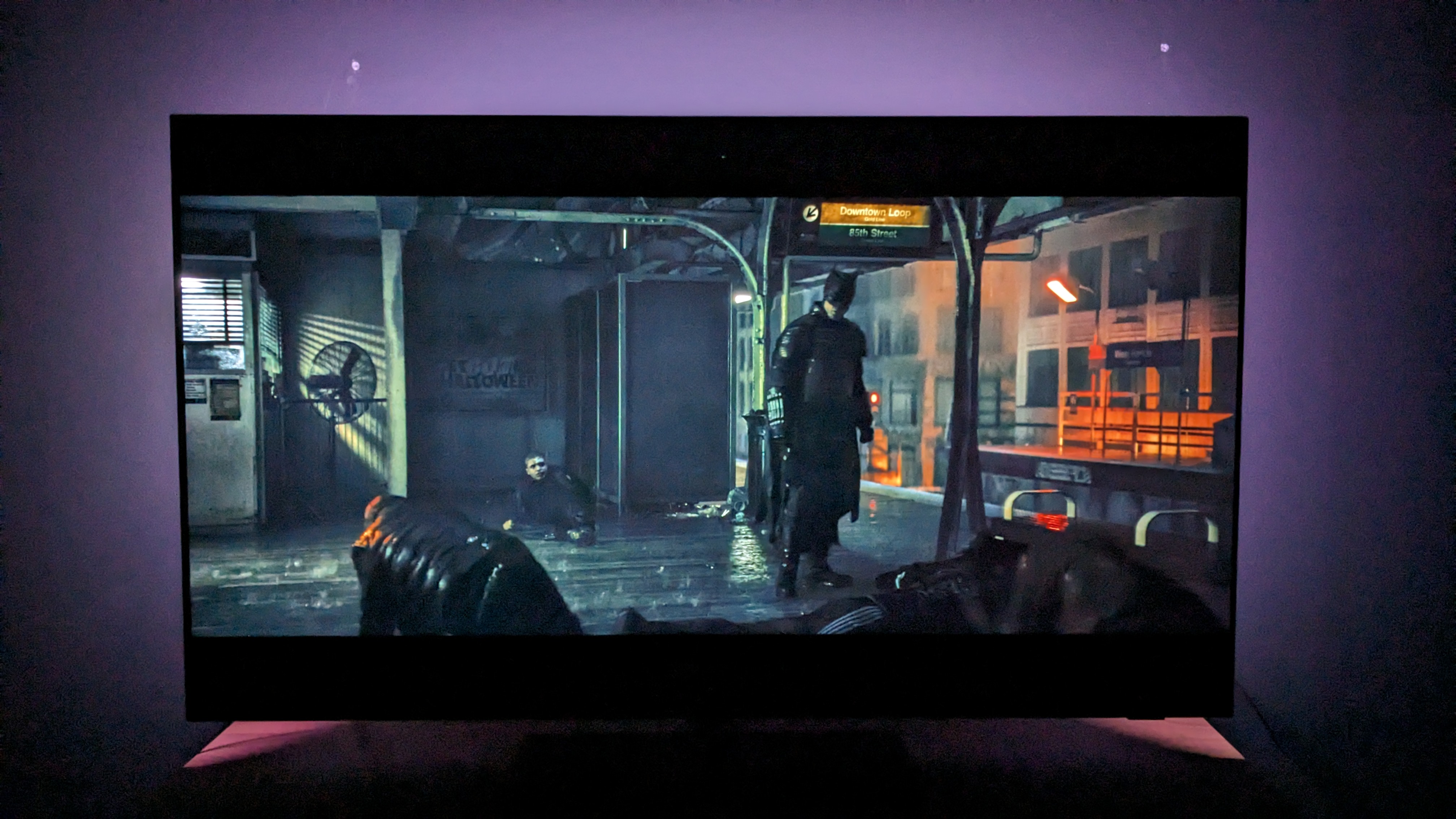I tested an Ambilight OLED TV and it made me feel like a kid at Christmas
Seeing really is believing

Philips’ Ambilight TVs have always been incredibly eye-catching. Using LED strips around the frame of the TV, Ambilight TVs project different colored lights out the back that bounce off the wall behind to add an extra layer of immersion to your viewing experience. As TVs in general continue to progress and evolve, Ambilight itself has done the same.
There are many options on what you can do with Ambilight, whether you’d like it to follow the video on screen, meaning the colors behind will constantly change along with the image, or set it to solid colors for more of a mood or to suit the aesthetics of a room. There’s even an option to follow audio if you’re streaming music through the TV as well.
For some, Ambilight is an absolute must as it provides that extra wow factor they’re looking for when buying one of the best TVs. For others, it’s a gimmick which thankfully can be turned off. If I’m completely honest, I was very on the fence with it. Working in an A/V retailer, I had experience of the Philips Ambilight TVs and regularly demoed them, but the Ambilight never grabbed me. It was an intriguing feature, but one that didn’t affect my opinion of the TV itself.
I recently got to review the mid-priced Philips Ambilight OLED TV from its 2023 lineup, the OLED808. As I set up and tested the TV, I was suitably impressed with its overall quality. Then I came to the Ambilight. Again, I watched different TV shows and movie scenes and thought, ‘Hey, this is pretty neat’. But then I tested the Ambilight in dimmer and dark conditions and that’s when it hit me: I had become an Ambilight believer.

Color me impressed
As a Star Wars fan, I regularly use scenes from Star Wars movies and TV shows to test different qualities such as color, black levels, sharpness, contrast and more as they have such punchy imagery. Lightsabers in particular are an excellent test for color (and they look cool). So, when I selected several lightsaber duels from different Star Wars movies and TV shows including The Force Awakens and Ahsoka, I was naturally excited to see what Ambilight would do, and I wasn’t disappointed.
The colors on the Philips OLED808 itself were already rich and vivid, up there with the best OLED TVs, and with the Ambilight illuminating the wall behind, any lightsabers or lasers seemed to jump from the screen itself. Flashing, dazzling colors danced around the screen and as I sat and watched, I felt a sense of awe that made me feel like a kid at Christmas; I was immersed and loved every second of it. When watching some of the older Star Wars movies, I went back to my childhood, feeling the same sense of amazement I’d felt the first time watching these movies.
Another movie that Ambilight gave an extra layer to was Godzilla vs Kong. The perfect scene for this was when Godzilla caused chaos in Tokyo as it marched its way through the neon-soaked streets blasting its blue flame. With the Ambilight dialed up, I was met with a whirlwind of color that added even more to an already dynamic scene. In the darkened conditions of my testing space, color from the OLED808 flooded the room and I felt completely engrossed.
Sign up for breaking news, reviews, opinion, top tech deals, and more.

Where does the OLED808 stand?
So, the Philips OLED808 is a wondrous TV, but where does it stand in comparison to its counterparts? Its closest rival, the LG C3, has very similar specs across the board but beats the OLED808 on value, with a slightly lower price tag at the time of writing. But the C3 doesn’t have Ambilight. Another OLED808 rival is the Samsung S90C, which we recently named our TV of the year. The Samsung S90C is an outstanding TV and probably does take the win with its higher brightness levels and better sound system. But the S90C doesn’t have Ambilight. Are you starting to see a theme here?
Another rival would be the Sony A80L, which takes the win over the Philips OLED808 in the sound department, with a more punchy and sophisticated sound system. But, you guessed it, the A80L doesn’t have Ambilight. I may keep going on about Ambilight, but it really did surprise me how much it made my viewing experience more immersive and, more importantly, more fun. Even if you don’t like Ambilight, which is a feature that can be easily switched off, the Philips OLED808 is a brilliant TV in its own right that more than holds its own against its rivals.
I realise that my child-like sense of wonder sounds too good to be true, but I encourage you to go and check out an Ambilight TV. It really needs to be seen to be believed. You may not be the kid at Christmas like I was, but I can guarantee you’ll have fun.
You might also like...

James is the TV Hardware Staff Writer at TechRadar. Before joining the team, he worked at a major UK based AV retailer selling TV and audio equipment, where he was either telling customers the difference between OLED and QLED or being wowed by watching a PS5 run on the LG 65G2. When not writing about the latest TV tech, James can be found gaming, reading, watching rugby or coming up with another idea for a novel.